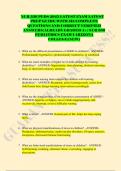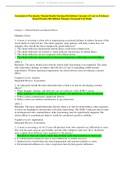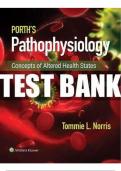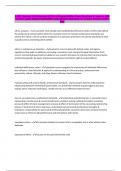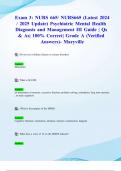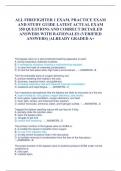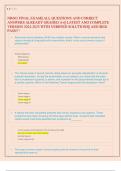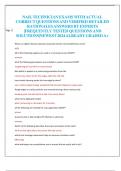Exam (elaborations)
NUR 336 PEDS 2025 LATEST EXAM LATEST PREP GUIDE WITH 515 COMPLETE QUESTIONS AND CORRECT VERIFIED ANSWERS|ALREADY GRADED A+|NUR 336 PEDIATRICS EXAM 1 ARIZONA COLLEGE(NEW)
- Course
- Institution
NUR 336 PEDS 2025 LATEST EXAM LATEST PREP GUIDE WITH 515 COMPLETE QUESTIONS AND CORRECT VERIFIED ANSWERS|ALREADY GRADED A+|NUR 336 PEDIATRICS EXAM 1 ARIZONA COLLEGE(NEW) What are some examples of higher level skills affected by learning disabilities? - ANSWER-Organization, time planning, abstrac...
[Show more]
